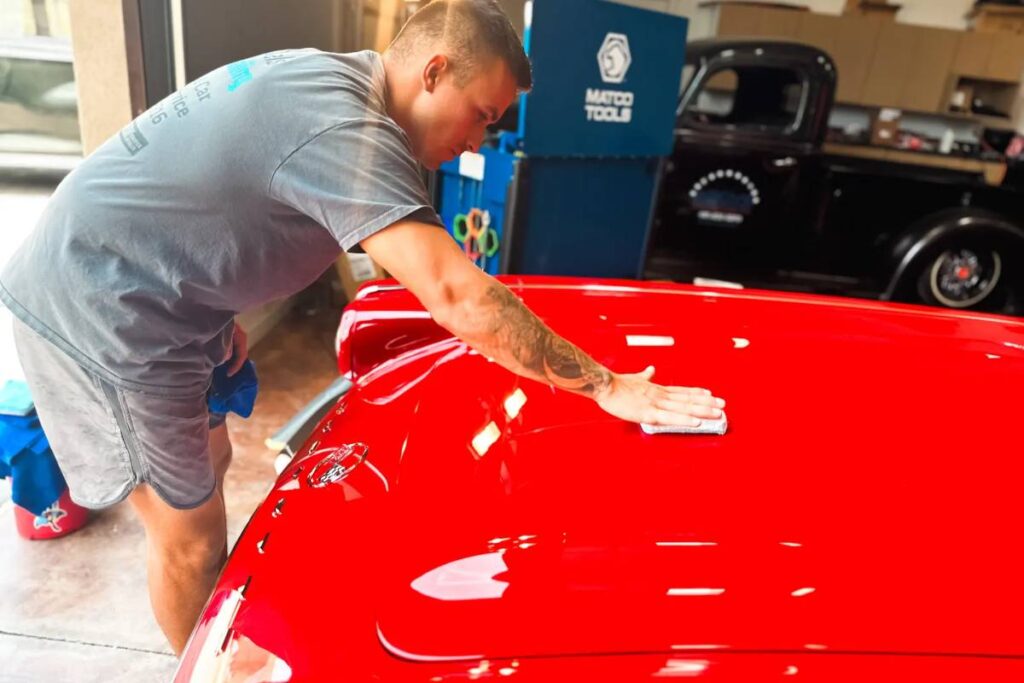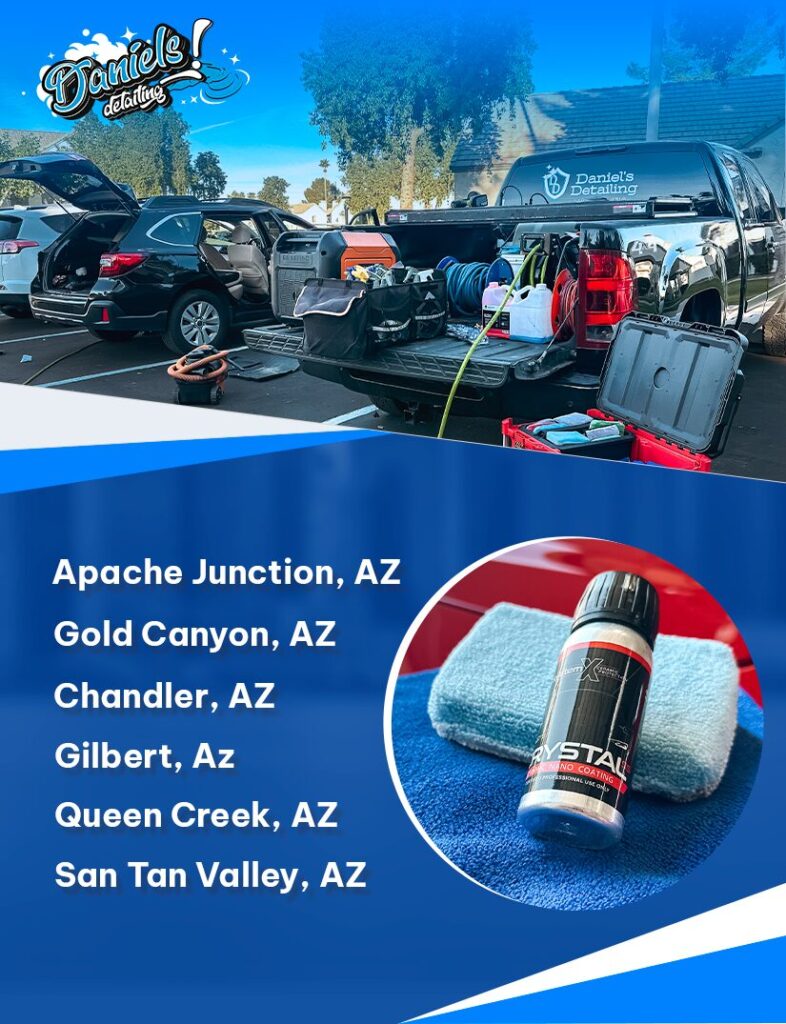Ceramic coatings don’t just add gloss. They provide practical protection, ensuring your car stays in top condition for longer. But what exactly makes these wonder products so effective? The secret lies in their unique combination of silica and titanium dioxide, which bond to your vehicle’s surface, creating a resilient shield.
Ready to explore the science behind ceramic coatings? Let’s take a closer look!
Key components of ceramic coatings
Silica (SiO2)
Silica, or silicon dioxide, is the core ingredient of most ceramic coatings. It’s responsible for the hard, glass-like layer on your vehicle’s surface. This layer bonds with the paint, protecting against contaminants and UV rays. Silica is a natural compound found in sand and quartz, known for its ability to harden and create a protective barrier.
Titanium dioxide (TiO2)
Some ceramic coatings include titanium dioxide, which enhances durability and creates a shinier surface. TiO2 can also improve the coating’s resistance to harmful UV rays and oxidation, making it a crucial ingredient for those seeking extra protection from sun damage. This compound helps boost the coating’s reflective properties, providing both aesthetic and functional benefits.

Polymers and resins
Polymers and resins are often added to ceramic coatings to improve their bonding capabilities and longevity. These components ensure that the coating adheres effectively to the paint and can withstand environmental stressors such as heat, rain, and pollutants. The strong bond created by these substances ensures long-lasting protection.
Nanoparticles
Many ceramic coatings use nanotechnology to fill in the microscopic pores on a car’s surface, making the coating more uniform and effective. Nanoparticles allow the coating to provide smoother, more consistent coverage, increasing the product’s protective qualities and overall finish. These nanoparticles give ceramic coatings their hydrophobic nature, causing water to bead up and roll off the surface.
Solvents
Solvents dissolve the silica and other components to ensure that the coating can be applied evenly and smoothly. These solvents evaporate during curing, leaving behind the durable ceramic layer. While they serve no protective purpose, solvents are essential for ensuring a proper application and finish.
The function of ceramic coatings

The hydrophobic effect
A major appeal of ceramic coatings is their hydrophobic properties, meaning they repel water. When water contacts a ceramic-coated surface, it beads up and rolls off, taking dirt and grime. This makes your vehicle easier to clean and keeps it looking cleaner for further extended periods. This water-repelling feature comes from the molecular structure of silica and titanium dioxide, which form a non-stick surface on the car’s exterior.
UV protection
Ceramic coatings offer superior protection against UV radiation. When exposed to the sun, a vehicle’s paint can oxidize and fade over time. The protective layer formed by ceramic coatings prevents this by blocking the sun’s harmful rays. This is especially important for maintaining the vibrancy of your vehicle’s paint job, particularly in sunny environments like Arizona.
Durability
Ceramic coatings are far more durable than traditional waxes or sealants. While wax may last only a few months, a ceramic coating can last several years. The strong bond created by the coating’s ingredients ensures it remains intact through harsh weather, washes, and everyday wear. However, the longevity of the coating depends on proper maintenance and environmental factors.
Interior and exterior protection
Ceramic coatings aren’t just limited to the exterior paint. Some products are designed specifically for interior surfaces, such as leather, fabric, and plastic.
- Interior protection: Ceramic coatings applied to leather or fabric seats can make them more resistant to stains and easier to clean. Plastic surfaces benefit from the same UV protection as the exterior, preventing fading and cracking over time.
- Exterior protection: In addition to the paint, ceramic coatings can also be applied to wheels, glass, and plastic trims, offering comprehensive protection for the entire vehicle.
Protect your car with ceramic coatings at Daniel’s Detailing
Experience the transformative power of ceramic coatings at Daniel’s Detailing. Whether you want to enhance your car’s gloss, protect it from environmental damage, or reduce the need for frequent cleaning, our ceramic coating services in 663 W 2nd Ave # 1, Mesa, AZ 85210, United States will meet all your needs. Our expert team uses premium products to deliver lasting protection and unbeatable shine.
Ready to give your vehicle the ultimate treatment? Call 480-734-8316 and book your appointment today!





